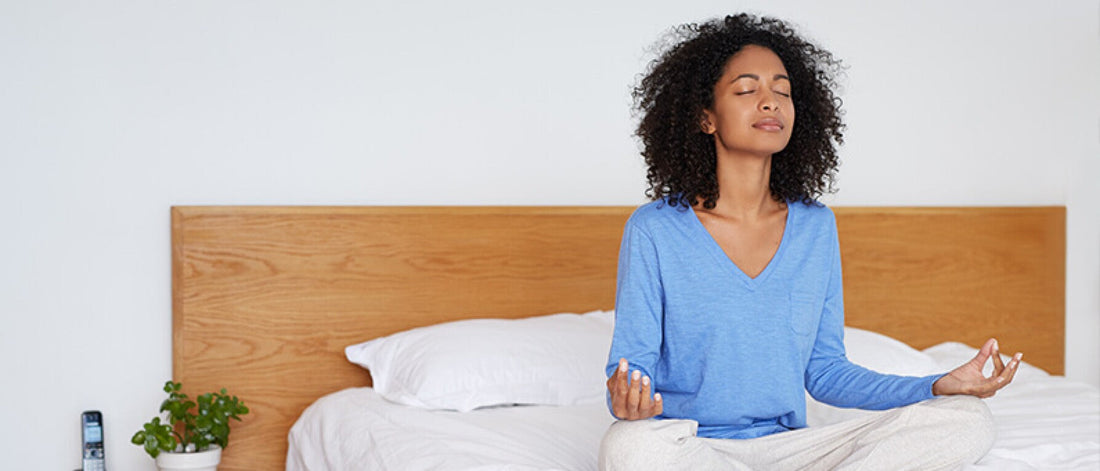If you are one of the millions of people in the world who meditate, you know how powerful the benefits can be in your life. Or maybe you haven’t felt concrete benefits yet, but you’ve read the research and are committing to it anyway.
Whether you meditate every day or have only tried it once or twice, expanding your perception of when, where, and how you meditate will not only increase your chances of experiencing its benefits but also fortify meditation and mindfulness as a way of life.
You don’t need fancy cushions, aromatic candles, or the perfect soundtrack to meditate. It doesn’t need to be first thing in the morning or done with a woven shawl over your shoulders. You needn’t have a good singing voice to chant, nor a dedicated yoga room to abscond to.
All you need to meditate is you.
Here are some ways of describing meditation:
Try It:
For this practice, do the following;
Try It:
A simple mindfulness meditation is the Five Senses practice, in which you scan through each of your senses and tune in to what you notice.
Try It:
Choose a mantra that feels good and/or has significance for you. Literally anything can be a mantra, but you want to make sure to pick something positive and not too complicated. You can experiment with English and Sanskrit mantras, such as:
Learn a natural, effortless style of meditation that helps invite renewal and freshness into every day with Basics of Meditation, a self-paced online course guided by Deepak Chopra. Learn More.
Whether you meditate every day or have only tried it once or twice, expanding your perception of when, where, and how you meditate will not only increase your chances of experiencing its benefits but also fortify meditation and mindfulness as a way of life.
Ditch What You Think Meditating Is “Supposed” to Look Like
It is easy to get caught up in what you think you should be doing when you are practicing meditation. If you are a perfectionist, you will likely not even attempt to meditate if the conditions aren’t just right; the lighting, the timing, the seating, or even your attitude might intimidate you out of keeping up with your practice. However, the first step toward positive change is to recognize this fundamental truth of meditation: All you need to meditate is you.You don’t need fancy cushions, aromatic candles, or the perfect soundtrack to meditate. It doesn’t need to be first thing in the morning or done with a woven shawl over your shoulders. You needn’t have a good singing voice to chant, nor a dedicated yoga room to abscond to.
All you need to meditate is you.
What Is Meditation Anyway?
Webster’s Dictionary defines meditation as “engaging in a mental exercise for the purpose of reaching a heightened level of spiritual awareness.” Yet there are dozens of ways to define meditation that might resonate with you and could give you the motivation you need to be more committed to your practice.Here are some ways of describing meditation:
- Sitting in silence
- Smiling with your heart
- The practice of being with yourself
- Moving from the external to the internal world
- Immersing yourself with the moment
- Noticing what is going on within and around you
- Single-pointed focus
- Taking charge of your mind
- The art of getting to know yourself (and your Self) better
1. Zen Meditation on the Breath
Buddhist Zen (or Zazen) Meditation involves focusing your attention on the breath and remaining aware of the present moment. Zazen literally translates to “seated meditation,” and therefore all you need for this form of meditation is a place to sit.Try It:
For this practice, do the following;
- Sit anywhere that will allow you to have a long, tall spine, and be comfortable. You can sit on your desk chair, the floor, or even the edge of your bed. Be sure you are comfortable enough to find stillness for a few minutes.
- As you sit, literally rise to the occasion by elongating your spine. Decide if you’d like to close your eyes or to keep your eyes open while focusing on a single point in the room.
- Breathe in and out through your nose.
- Notice the rhythm of the breath, the temperature of the breath hitting your nostrils, and the sensations of the air moving through your lungs.
- Listen to the sound of your breath and try to smooth out any choppiness.
- Your mind will wander, so when it does, learn to redirect your mind back to the breath.
- Start with just two minutes, and work your way up to five or ten.
2. Mindfulness Meditation
Mindfulness practices are about tuning in to everything that comprises the present moment, including your thoughts, sensations, and emotions. It’s about pausing to tune into, rather than tune out, the experience that is going on right now.Try It:
A simple mindfulness meditation is the Five Senses practice, in which you scan through each of your senses and tune in to what you notice.
- You can sit, stand, or even walk while you do this one.
- Start with what you see. Take 60 seconds to look around and really look at your surroundings.
- Then, spend one minute listening to all the sounds in your environment. Can you distinguish the far-away sounds, the nearby sounds, and even sounds that are happening within your body? Try not to label or judge the sounds (i.e., “There’s that annoying lawnmower again”), simply practice noticing them.
- For the next minute, pay attention to your sense of touch. What can you feel with your hands, feet, and skin? Notice the feeling of the clothing on your body, the sensation of your feet in your shoes or on the earth, and any textures that might be nearby.
- And finally, spend an intentional few moments to identify any smells and/or tastes you might be experiencing.
- To close, see if you can become aware of all five senses at the same time.
3. Mantra Meditation
Also called Primordial Sound Meditation, this method uses the repetition of mantras, affirmations, or sounds to focus the mind and uplift the spirit. Mantras can be spoken or sung out loud, but they can also be whispered or chanted silently anywhere and at any time.Try It:
Choose a mantra that feels good and/or has significance for you. Literally anything can be a mantra, but you want to make sure to pick something positive and not too complicated. You can experiment with English and Sanskrit mantras, such as:
- So Hum (“I am That”)
- Aham Prema (“I am Love”)
- Om Shanti Shanti Shanti (“Peace, peace, peace”)
- Om Namah Shivaya (“I honor the Divinity within and around me”)
- Just This
- I am Love
- Life loves me
What Do You Mean by “Anywhere”?
Maybe you are wondering where to meditate. While it’s true that some meditation practices are best done in a quiet space where you won’t be disturbed, there are so many ways to meditate wherever you are.- For example, say you are writing under a deadline, and you hit a mental block. You could go for a walk around the block and take five minutes to sit on a bench or under a tree to do a Zen meditation.
- Feeling anxious while you are on the subway because you are going to be late for your meeting? Tune into each of your senses and regulate your breath.
- Driving to yoga class and can’t find a parking spot? Repeatedly chant “Om Gam Ganapataye Namaha,” which is the mantra of Ganesha, the remover of obstacles.
Learn a natural, effortless style of meditation that helps invite renewal and freshness into every day with Basics of Meditation, a self-paced online course guided by Deepak Chopra. Learn More.






















